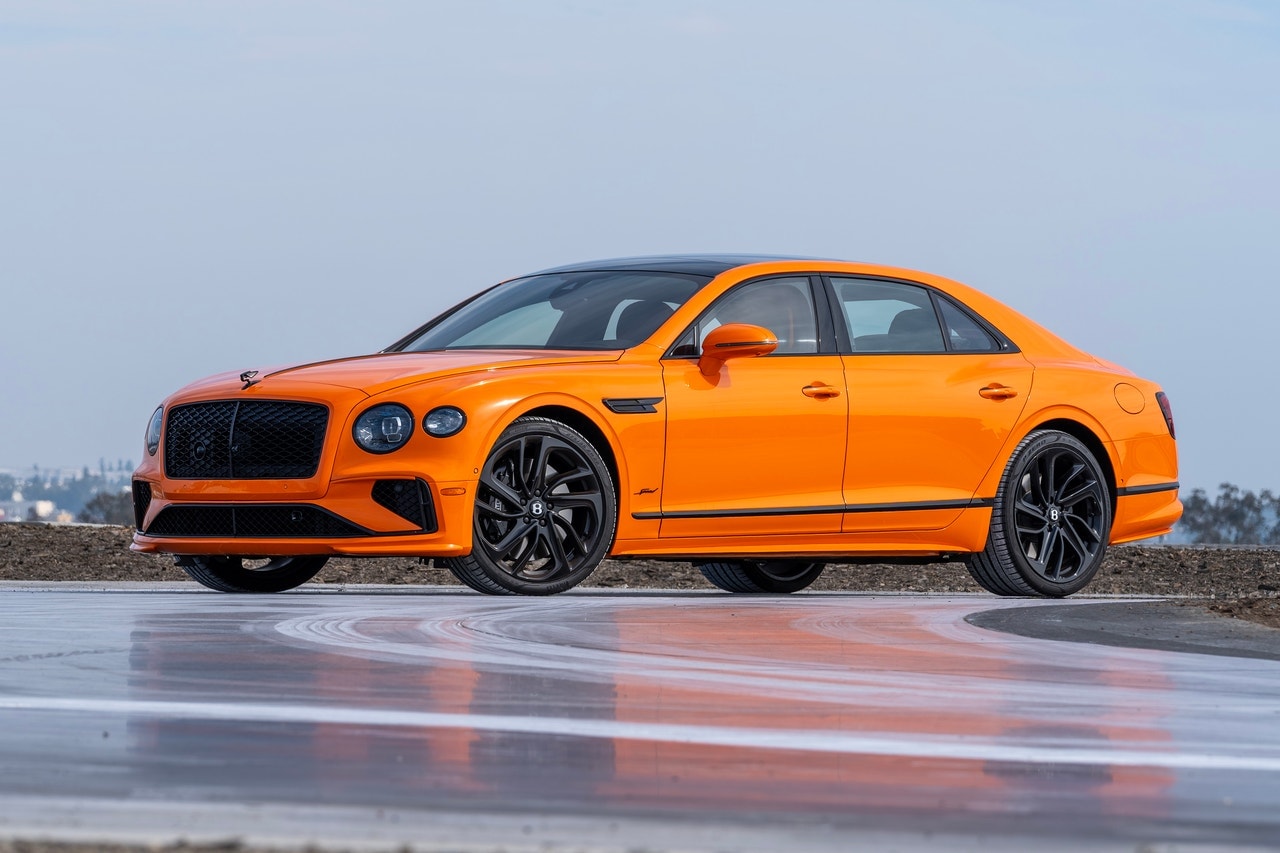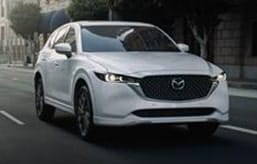- We test the Bentley Flying Spur Speed, with its new plug-in hybrid powertrain
- At the Edmunds' test track, the Flying Spur produced impressive results
- The big sedan is one of the best daily drivers out there
2025 Bentley Flying Spur Speed Tested: Big Power, Big Price, Big Appeal
You could have a four-bedroom house, or this four-door car
Hundreds of cars pass through the gates of the Edmunds' test track each year, but it's still a special occasion when a vehicle like this gigantic, pumpkin-colored sedan makes an appearance. The 2025 Bentley Flying Spur Speed arrives with a new plug-in hybrid powertrain to replace its outgoing W12, one it shares with the Bentayga and Continental GT in the Bentley garage.
We tested a Continental GT Speed with the same hybrid setup a few months ago, so we'll share those results with you as well to see how growing from two to four doors can affect performance. Along the way we'll also try to answer this important question: What do you get when you buy a car that costs as much as a house?
Big sedan, tiny times
One thing to keep in mind when I'm sharing the following testing results with you: The Flying Spur weighed in at 6,060 pounds on our scales and is about 5 inches longer than a Toyota Sienna minivan.
This makes it all the more impressive that it matched its estimated 0-60 mph of 3.3 seconds on the dot and covered the quarter mile in 11.1 seconds at 125.4 mph using the launch control system. We had the battery fully charged to put up these times as well. This result puts the Bentley in some illustrious company, as its 0-60 time at our track ties the Audi RS 6 Avant and Acura NSX Type S.
The Flying Spur Speed also has gigantic brakes: 16.5-inch front rotors with 10-piston calipers and 15-inch rear rotors with four-piston calipers. Stopping from 60 mph took 114 feet and that performance was consistent across multiple runs.
And finally, on our skidpad the sedan recorded 0.90 lateral g. It was wearing the same P Zero Elect tires as the Continental GT, which showed a bit more grip with 0.92 lateral g.
That small gap was indicative of the thin margins between the performance of the Continental GT and the Flying Spur, both in Speed guise. Its 0-60 mph time of 3.1 seconds and quarter-mile time of 11.0 seconds at 125.9 mph were quite close as well, as was its 111-foot braking distance. However, it offers a significantly higher top speed: 208 mph vs. 177 mph for the sedan.
Not quite a sport sedan
The Flying Spur's impressive measurables were backed up by pretty good performance on the track, though I would say it does a great imitation of a sport sedan rather than actually being one. Underneath where you sit, the suspension is hard at work trying to keep things as flat as possible. There are 48-volt active anti-roll bars front and rear, and in the corners this system prevents the Bentley from tossing side to side as you might think it would with all of that weight. It does this while somehow preserving wildly good ride quality while on the street.
You can definitely sense that voodoo magic happening, and as a result there's a slight disconnect between the driver and the results of inputs. It's not off-putting in any way, but it does make the car feel a touch less responsive. Again, not a bad thing — this thing is meant to spend its days cruising more than careening around our handling circuit.
The new twin-valve dampers enable rebound and compression to be separately controlled. It explains why the Bentley feels so rock solid under braking, with minimal nosedive, and why letting off the brakes doesn't make it jump up and unsettle the front wheels. The brakes do feel a touch soft at the top but bite quickly when you press hard on the pedal.
The new plug-in hybrid powertrain's electric motor does a decent job of moving the Flying Spur around solely on electrons. It can reach speeds up to 87 mph on electric power and gives the Bentley an estimated 47 miles of electric range. Around town, it's easy to drive the car without having the gas engine turn on, though if you get deeper into the gas pedal it kicks on with a satisfying rumble. I was even able to get on the highway without the engine activating, helped by a subtle detent in the pedal that indicates when electric mode won't be enough to give you the desired acceleration.
Not a Bentley, your Bentley
While the Flying Spur's driving experience is great, that alone can't make that price tag worth it. After all, this powertrain can also be found in other vehicles like the Porsche Panamera Turbo S E-Hybrid, and that car also drives quite well and is even better on the track.
The same can be said for many of the interior parts. Both Bentley and Audi are owned by Volkswagen, and there's some clear crossover between the interior of the Bentley and Audi products. Many of the Bentley's technology features can be found in lots of other cars. For example, a $24,000 Kia K4 also comes with a 12.3-inch touchscreen standard.
So if you're not paying for performance or features, what does the Bentley's stratospheric price tag get you that you can't get other places? The answer is customizability.
There are 101 different exterior paint options, and if that isn't enough for you, you can request any paint color the company has ever offered. If those don't do it, you can send them a color and they'll figure it out for you. On top of that, there are 22 different primary interior colors, 11 secondary colors, eight wood trim options, and three "technical" finishes (like carbon fiber or aluminum) to choose from. You can even customize some individual finishes, like the fabric that covers the gear shifter. If you need even more personalization, you can turn to Mulliner, Bentley's in-house customization team.
In all, Bentley says there are billions of possible combinations for its cars. And that level of customization combines with an extreme level of attention to detail. For example, if you get wood trim, it's all from the same tree so the grain lines up perfectly. THAT is what you're paying for. When you buy one of these, it isn't a Bentley; it's yours.
While you can be assured you'll be getting exactly what you wanted, you'll have to pay for the privilege — about one-quarter of our car's $367,060 as-tested price was options. When you step back to think about if the Flying Spur is worth house-money, one of the problems is that it's hard to say that any car can justify a price tag like this. At some point, it converts from a rational purchase to one of pure desire. But I will say this: After driving the Flying Spur around on the street and test track, it's good enough that you can forget in moments how expensive it is and just enjoy the ride. And that's an achievement in and of itself.
2025 Bentley Flying Spur Speed vitals
As-tested price | $367,060 |
|---|---|
Powertrain | twin-turbo 4.0-liter V8, plus electric motor |
Power | 771-hp, 738 lb-ft of torque (combined) |
Battery capacity | 25.9 kWh |
Estimated range | 47 miles |
0-60 mph | 3.3 sec |
Quarter mile | 11.1 sec @ 125.4 mph |
60-0 mph braking | 114 ft |
Skidpad | 0.90 lateral g |
Weight | 6,060 lbs |
Suspension | four-corner air suspension with 48-volt active anti-roll bars front and rear |
Options |
|






 by
by  edited by
edited by